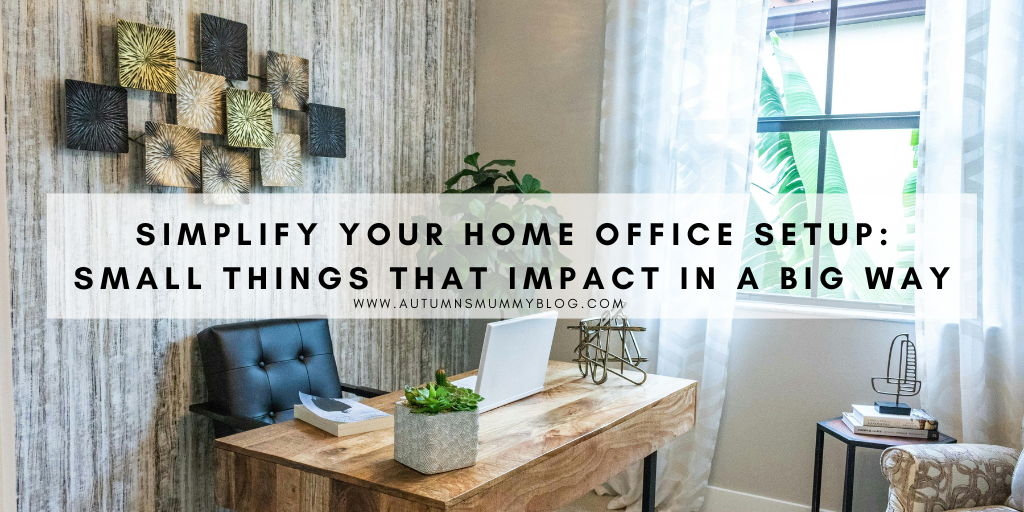Collaborative Post¦ Working from home has its advantages—the absence of a commute, the freedom to design your own workspace, and the chance to blend life and work more seamlessly. But any home-based business owner knows the other side of it too: the friction points. The snag of a misplaced cable. The hum of equipment you didn’t realise was so distracting until it broke your concentration. The subtle interruptions that, stacked together, eat away at flow.
A productive home office doesn’t demand a sweeping renovation or expensive overhaul. It thrives on thoughtful attention to the small, often overlooked details that shape your day from the first email to the last invoice.

Via Pexels
Rethinking the Physical Layout
Start with the basics: the path you move through every day. Is your desk placed so that natural light reaches it without flooding your screen with glare? Do you have to cross the room for a frequently used supply? These sound trivial, yet the act of turning, reaching, or shifting repeatedly breaks rhythm. Position essentials within arm’s reach, allow for natural light without strain, and you reduce the invisible labour of constant micro-adjustments.
Even something as simple as the angle of your chair against the room can matter. Facing a wall might help some concentrate; others feel confined until they turn slightly toward open space. A few degrees can change how you breathe in your own office.
Tools That Don’t Interrupt You
Technology should serve you subtly. When equipment introduces delays—slow startups, clumsy connections, constant troubleshooting—it becomes a barrier to focus. A business run from home demands reliability above all else. That means investing in devices that fade into the background of your workflow, doing their job without calling attention to themselves.
Take, for example, administrative tasks like scanning contracts, sending forms, or printing invoices. It’s easy to underestimate how often they interrupt a workday until the process feels clunky. A dependable device such as the Xerox C315 allows those moments to pass without friction—quick, intuitive, and consistent—so your focus stays on strategy, clients, and creative work rather than logistics.
Managing the Invisible Noise
Not all distractions are physical. Some are auditory or sensory—the tap of a neighbour’s dog, the ping of unnecessary notifications, the subtle fatigue of poor lighting. Soundproofing doesn’t need to be elaborate; a thick rug, curtains, or even well-placed shelves can soften the echoes of a room. Digital noise matters too: curating alerts so only what is urgent cuts through prevents your mind from constantly shifting gears.
The sensory environment sets the tone of your working hours. A lamp at the right height, a chair that holds posture rather than undermines it, or the texture of a desk surface that feels welcoming rather than sterile—each detail contributes more than we notice in the moment.
Creating a Flow That Stays Consistent
The goal of refining a home office isn’t perfection; it’s predictability. When your workspace supports a natural rhythm, you waste less energy managing interruptions and more energy moving forward with intent. The tools are where you expect them, the space welcomes rather than distracts, and the day unfolds without the weight of a hundred small obstacles.
That’s why the seemingly minor decisions matter so much. The way your cables are routed. The quality of the pen you reach for. The steadiness of the connection that keeps a client call from dropping mid-sentence. None of these details are glamorous, but together they form the backbone of a workday that feels smooth, productive, even satisfying.
A Workspace That Lets You Forget About It
The true sign of a well-designed home office is that you stop thinking about it. You sit down, you work, you finish, and the space has carried you rather than hindered you. There’s no jolt when you print, no sigh when you turn on a lamp, no shuffle of searching for that one tool you should have kept closer.
That’s the reward of paying attention to the small things. Not a showroom-ready office or an endless cycle of upgrades, but a space where your work can be the focus, and your office quietly supports you in doing it well.
Cover photo by Barion McQueen: https://www.pexels.com/photo/brown-wooden-table-3946658/
